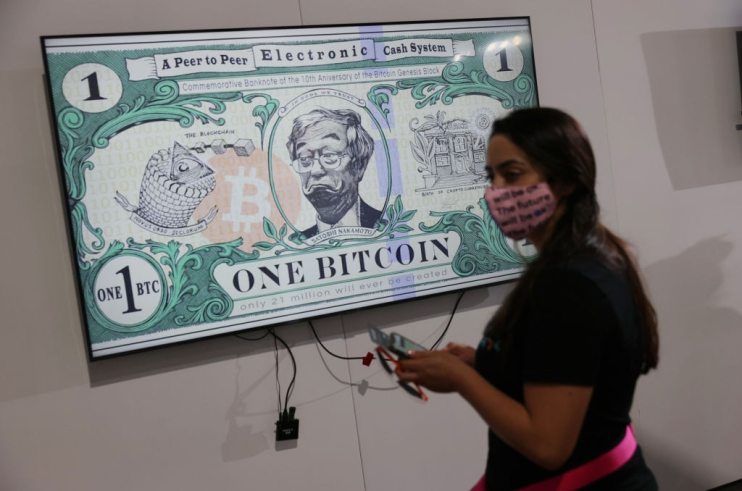The prodigal son returns: The hunger for Bitcoin signals an appetite for hard money

This week marks 50 years since President Richard Nixon announced the US would abandon the Gold Standard. Instead of redeeming the dollar in gold, the government allowed its value to float freely on the market.
So began a sharp devaluation of the world’s reserve currency of choice under the US-led Bretton Woods system. Priced in gold, the dollar has lost more than 90 per cent of its value since the Nixon shock. Meanwhile the British pound has lost over 40 per cent of its dollar value.
The pandemic has only accelerated this process, illustrating just how soft paper currencies really are. Governments have printed money in unprecedented quantities, with a fifth of all dollars to ever come into existence created by the Federal Reserve in 2020 alone.
Under the regime of easy money, those with their hands on the printer assume extensive power, while the savings of all those who do not are constantly devalued. Today, $100,000 has the same purchasing power that $14,945 had in 1971.
Against this uncertainty in traditional currency, the rise of digital currencies is unsurprising. Crypto adoption has risen by 881 per cent this year, up 2300 per cent since Q3 2019, according to new data from Chainanalysis. In January 2021 the number of crypto owners surged above 100 million for the first time. A mere six months later the figure more than doubled, reaching 221 million by the end of June.
The aggressive adoption has been driven by an appetite for a stable store of value. Proponents of Bitcoin, the king of crypto currencies, have long promised it will offer a return to hard money that is not controlled by governments or central banks.
It’s not just the fabled wealth of early Bitcoin investors which has earned the currency the nickname of “digital gold.” Bitcoin’s scarcity is programmed into its underlying algorithm, making it comparable to rare metals used as currency.
Like gold, there is a limited supply of Bitcoin, and it is difficult to “mine”. New bitcoins are created as a reward for miners who solve algorithms in order to add new blocks, containing transaction data, to bitcoin’s blockchain. The flow of new bitcoins will stop, however, when bitcoin reaches its max supply of 21 million units.The rules governing this system are sacrosanct. They cannot be changed without the consensus of the entire bitcoin network, making an increase in supply highly unlikely.
Crucially, this means that like gold, bitcoin has what is known as a high stock to flow ratio – in other words, the rate at which new bitcoins are created is low relative to its existing supply. This means Bitcoin cannot be devalued by people creating more and more coins when its price rises – a trap which has plagued lesser metals such as silver.
Bitcoin’s design means that mining a new block, the process which creates bitcoin, takes an average of ten minutes. This hard money quality is key to how bitcoin is valued by investors and even give a predictability to its price movements.
The dramatic bull-runs in bitcoin price in 2013, 2017 and 2020 were kickstarted by halving events, which reduce the rate at which new coins can be created. It’s scarcity and low flow is integral to its price.
Investors and analysts have been quick to jump on this quality as proof of bitcoin’s value as a currency. In his bestselling book The Bitcoin Standard, Saifedean Ammous boldly claimed that if bitcoin continues to function like this, other currencies such as gold and paper money will be made to look like “quaint anachronisms” beside it.
This is a pretty big if. Bitcoin’s carbon footprint has been a major stumbling block. The mining process is so energy intensive that its carbon footprint exceeds that of entire countries, including Finland, Greece or Belgium. This is incompatible with the global community’s climate commitments.
Price volatility, too is a major concern, as it is so heavily tied to investor confidence. Bitcoin experience one of its sharpest ever deflections below the stock to flow model’s price prediction after China banned cryptocurrencies and Elon Musk backtracked on promises to accept crypto payments at Tesla. If a currency is tied to the tweets of a billionaire, it can hardly provide the same stability as the dollar.
Whether or not bitcoin becomes the digital currency of choice, there is some method to the madness. The rapid adoption of crypto sends a loud message that investors are wary of fiat currency’s inflationary woes.
When Nixon addressed the nation through their television sets to announce the end of the gold standard, he could scarcely have imagined the rapturous return to hard money that would be occurring half a century later.